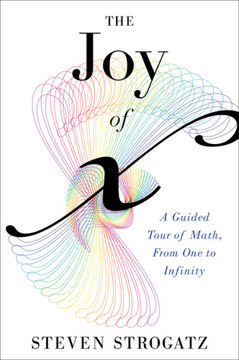Key Takeaways
1. Synchronization is a pervasive phenomenon in nature and technology
The tendency to synchronize is one of the most pervasive drives in the universe, extending from atoms to animals, from people to planets.
Universal synchrony. From the subatomic realm to cosmic scales, sync appears in diverse systems. Examples include:
- Atoms in lasers emitting light in unison
- Fireflies flashing in harmony
- Heart cells beating as one
- Planets locked in orbital resonance
Sync often emerges spontaneously, without central control. This self-organizing behavior intrigues scientists across disciplines, from physics to biology. Understanding sync could unlock mysteries in fields like:
- Neuroscience: How do billions of neurons coordinate to produce consciousness?
- Ecology: What maintains the delicate balance in ecosystems?
- Economics: How do financial markets behave coherently despite individual chaos?
2. Fireflies and heart cells demonstrate the power of collective rhythm
Do these feats of synchrony occur spontaneously, almost as if nature has an eerie yearning for order?
Emergent order. Fireflies and heart cells exemplify how individual oscillators can spontaneously align their rhythms:
- Fireflies: Males flash in unison to attract mates more effectively
- Heart cells: Pacemaker cells synchronize to create a steady heartbeat
Key principles of biological sync:
- No central conductor or leader
- Simple rules of interaction between neighbors
- Collective behavior emerges from local interactions
- Small adjustments accumulate to produce global order
These systems demonstrate nature's ability to create order from apparent chaos, challenging our understanding of complexity and self-organization.
3. The human circadian clock orchestrates our daily biological symphony
We are like wheels within wheels, hierarchies of living oscillators.
Body's internal rhythm. The circadian system coordinates countless biological processes over a 24-hour cycle:
- Sleep-wake cycle
- Hormone production
- Body temperature fluctuations
- Cognitive performance
Key components:
- Master pacemaker: Suprachiasmatic nucleus in the brain
- Peripheral clocks: In organs and tissues throughout the body
- Environmental cues: Primarily light, but also social interactions and meal times
Disruptions to this system can have profound effects:
- Jet lag
- Shift work disorders
- Seasonal affective disorder
- Increased risk of various health problems
Understanding circadian rhythms has implications for medicine, productivity, and overall well-being.
4. Coupled oscillators explain the mathematics behind spontaneous sync
The Kuramoto model neatly solved a number of puzzles about superconductivity.
Mathematical framework. The Kuramoto model provides a simple yet powerful explanation for how sync emerges in diverse systems:
- Oscillators with different natural frequencies
- Weak coupling between oscillators
- A critical coupling strength triggers spontaneous synchronization
Key insights:
- Phase transition: Sync appears suddenly at a critical point
- Order parameter: Measures the degree of synchronization
- Universality: Similar behavior across different types of systems
Applications:
- Explaining firefly synchronization
- Modeling neural networks
- Understanding superconductivity
- Predicting crowd behavior
This model bridges biology, physics, and mathematics, offering a unified approach to studying sync across disciplines.
5. Inanimate objects can synchronize, from pendulum clocks to superconductors
Sync occurs through mutual cuing, in the same way that an orchestra can keep perfect time without a conductor.
Nonliving sync. Inanimate systems display remarkable synchronization:
- Huygens' clocks: Pendulums on a common support sync their swings
- Lasers: Atoms emit light waves in perfect unison
- Superconductors: Electron pairs move in lockstep, eliminating electrical resistance
Common features:
- Weak coupling between components
- Nonlinear interactions
- Collective behavior emerges from simple individual rules
Technological applications:
- Precise timekeeping (atomic clocks)
- Telecommunications (lasers)
- Medical imaging (SQUIDs)
- Potential for quantum computing (Josephson junctions)
Understanding inanimate sync provides insights into self-organization in physical systems and inspires new technologies.
6. Chaos and sync coexist in complex systems
Chaos is not formless (again, despite the word's ordinary meaning).
Order in disorder. Chaotic systems can exhibit surprising regularities:
- Strange attractors: Complex but structured patterns in phase space
- Synchronized chaos: Chaotic systems can align their behavior while remaining unpredictable
Key concepts:
- Sensitive dependence on initial conditions (butterfly effect)
- Fractals and self-similarity
- Universality in the transition to chaos
Applications:
- Weather prediction
- Heartbeat analysis
- Secure communications
- Understanding turbulence
The coexistence of chaos and sync challenges our notions of order and randomness, revealing deeper patterns in complex systems.
7. Small-world networks reveal hidden connections in diverse systems
From now on, sync will no longer be associated with rhythmicity alone, with loops and cycles and repetition.
Unexpected connectivity. Small-world networks combine local clustering with long-range connections:
- Six degrees of separation in social networks
- Neural connections in the brain
- Protein interactions in cells
- Links between websites
Properties:
- Short average path length
- High clustering coefficient
- Scale-free degree distribution (in many cases)
Implications:
- Rapid information spread
- Efficient communication and transport
- Resilience to random failures
- Vulnerability to targeted attacks
Small-world architecture appears in diverse systems, from biology to technology, suggesting universal principles of network organization.
8. Human sync manifests in sleep patterns, crowd behavior, and consciousness
Can that really be so, or is there another secret hiding in the data, a missing key to the circadian code?
Human collective behavior. Sync appears in various aspects of human life:
- Sleep-wake cycles and circadian rhythms
- Menstrual synchrony
- Crowd movements and applause
- Economic boom-bust cycles
Neurological sync:
- Brain waves and neural oscillations
- Synchronized firing potentially linked to consciousness
- Disruptions in sync associated with disorders like epilepsy
Practical implications:
- Designing work schedules
- Understanding and preventing mob behavior
- Treating sleep disorders
- Enhancing group performance
Studying human sync bridges neuroscience, psychology, and sociology, offering insights into both individual and collective behavior.
Last updated:
FAQ
What's Sync by Steven H. Strogatz about?
- Exploration of Synchrony: The book delves into how order emerges from chaos in various systems, from biological organisms to physical phenomena, focusing on the concept of synchrony.
- Interdisciplinary Approach: Strogatz combines insights from mathematics, physics, biology, and social sciences to illustrate synchronization principles.
- Real-World Applications: It discusses practical implications of synchrony in technology and health, such as lasers, GPS, cardiac arrhythmias, and sleep disorders.
Why should I read Sync by Steven H. Strogatz?
- Engaging Narrative: Strogatz presents complex scientific concepts in an accessible and engaging manner, suitable for both lay readers and those with a scientific background.
- Broad Relevance: The themes of synchrony are relevant to various fields, enhancing appreciation of interconnected systems in nature and technology.
- Inspiration for Curiosity: The book encourages exploration of the beauty and complexity of the natural world, fostering wonder about underlying mathematical principles.
What are the key takeaways of Sync by Steven H. Strogatz?
- Nature of Synchrony: Synchrony is a fundamental aspect of the universe, occurring spontaneously in both living and non-living systems.
- Mathematical Foundations: The book highlights mathematical principles behind synchronization, particularly through the study of coupled oscillators.
- Implications for Science and Society: Strogatz discusses practical applications of synchrony in technology and medicine, illustrating its importance in various fields.
How does Sync by Steven H. Strogatz explain the concept of coupled oscillators?
- Definition of Coupled Oscillators: These are entities that cycle automatically and can influence one another’s rhythms, central to understanding synchrony.
- Mathematical Models: Strogatz discusses models that describe the behavior of coupled oscillators, explaining how they can synchronize under certain conditions.
- Real-World Examples: Examples include synchronization of brain waves and collective behavior of animals, demonstrating the concept's widespread relevance.
What is the significance of fireflies in Sync by Steven H. Strogatz?
- Example of Biological Synchrony: Fireflies are a primary example of spontaneous synchrony, where thousands flash in unison without a leader.
- Research Contributions: The book discusses biologists' work, like John Buck's, on understanding mechanisms behind synchronized flashing.
- Broader Implications: Fireflies illustrate principles of coupled oscillators and self-organization, applicable to various biological and physical systems.
What role does chaos play in Sync by Steven H. Strogatz?
- Chaos and Order: Strogatz explores how chaotic systems can exhibit synchronized behavior under certain conditions, a key theme in the book.
- Mathematical Insights: Nonlinear dynamics and chaos theory contribute to understanding synchronization, revealing complexity in seemingly random systems.
- Applications in Science: Understanding chaos and synchrony has practical implications in fields like medicine and engineering, such as diagnosing epilepsy.
How does Sync by Steven H. Strogatz relate to human behavior and social dynamics?
- Human Synchrony: Synchrony manifests in human behavior, such as group activities like dancing and singing, reflecting natural synchronization principles.
- Cultural Implications: Enjoyment of music and dance may stem from an innate drive to synchronize, highlighting social aspects of synchrony.
- Psychological Effects: Synchrony can enhance social bonds and improve well-being, providing a sense of connection and community.
What are the technological applications of synchrony discussed in Sync by Steven H. Strogatz?
- Lasers and GPS: Synchrony principles are applied in technologies like lasers and GPS, relying on coherent behavior of oscillators.
- Medical Imaging: Techniques like SQUIDs detect subtle magnetic field variations, demonstrating synchrony's practical benefits in health care.
- Power Grids: Synchronization of electrical generators is crucial for stability and reliability, illustrating synchrony's importance in engineering.
What is the butterfly effect in Sync by Steven H. Strogatz?
- Definition of Butterfly Effect: Small changes in initial conditions can lead to vastly different outcomes in chaotic systems, a key concept in chaos theory.
- Implications for Predictability: Long-term predictions in chaotic systems become nearly impossible due to sensitivity to initial conditions.
- Connection to Synchronization: Chaos can synchronize, challenging assumptions about the incompatibility of chaos and synchronization.
What role do small-world networks play in synchronization according to Sync by Steven H. Strogatz?
- Definition of Small-World Networks: Characterized by short path lengths and high clustering, facilitating efficient communication and synchronization.
- Impact on Collective Behavior: A few shortcuts in a network can enhance synchronization, applicable to social networks and biological interactions.
- Empirical Evidence: Examples include the Internet and social connections, illustrating small-world architecture's role in facilitating synchronization.
What is the significance of chaos theory in Sync by Steven H. Strogatz?
- Understanding Complex Systems: Chaos theory explains unpredictable behavior in complex systems, where small changes lead to significant differences.
- Synchronized Chaos: Chaotic systems can synchronize, challenging traditional views of chaos and synchronization as incompatible.
- Applications in Science and Technology: Chaos theory has practical applications in communications and engineering, leading to technological innovations.
What are the best quotes from Sync by Steven H. Strogatz and what do they mean?
- "At the heart of the universe...": Suggests synchrony is a fundamental rhythm underlying natural phenomena.
- "The tendency to synchronize...": Highlights synchrony as a universal principle observed across various systems.
- "The world is not made...": Reflects the idea that mathematical principles underpin the natural world, emphasizing math's role in understanding phenomena.
Review Summary
Sync explores synchronization phenomena across nature and science. Reviews praise Strogatz's engaging writing and interdisciplinary approach, making complex concepts accessible to general readers. Many found the book fascinating, highlighting examples like firefly synchronization and circadian rhythms. Some reviewers noted challenging sections, particularly in quantum physics. The book's exploration of how order emerges from chaos resonated with readers. Overall, it's regarded as an insightful, thought-provoking work that reveals hidden patterns in the universe, though some found certain parts difficult to grasp.
Similar Books
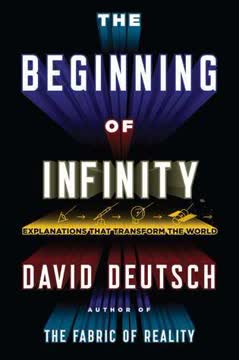
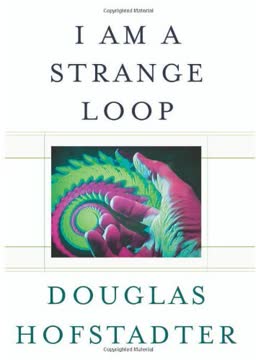
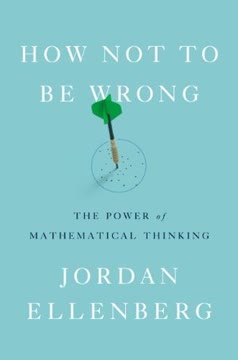


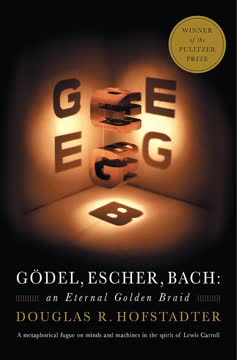



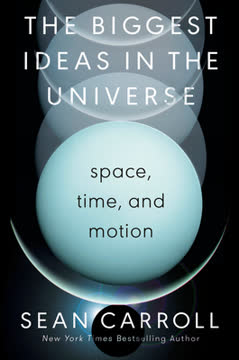
Download PDF
Download EPUB
.epub digital book format is ideal for reading ebooks on phones, tablets, and e-readers.

